If you want to know about the acoustics in auditorium or acoustics in cinema or acoustics in landscape, please click the link.
Multiplexes are a common entertainment destination, providing moviegoers with the ability to choose from a wide variety of films and watch them in a shared, immersive environment. One important aspect of the multiplex experience is the sound quality in the theater, which can have a significant impact on the overall enjoyment of the movie.
Acoustics in multiplexes refers to the science of controlling sound within these enclosed spaces. Properly designed acoustics can make a movie sound much better, while poor acoustics can make the same movie almost unwatchable.
To understand the importance of acoustics in multiplexes, let us take the example of a case study involving a popular chain of multiplexes.
1) Introduction
Multiplex cinema ………….
Having several separate screens within one building

Case study of nataraj complex, New delhi.
- Location: Motinagar, Najafgarh road, New delhi.
- Architect: Mr. Manoj Mathur
- Acoustic consultant: Mr. Mistry
Case study of 89-cinemas, kolkata : Acoustics and lighting of multiplexes
- Location: Swabhumi , EM bypass, Salt Lake City, Kolkata.
- Owner: Calcutta cine Pvt. Ltd (company)
- Managed by: consolidated entertainment Pvt. Ltd (CEPL).

’89 cinemas’ boasts of……….
- Four cinema halls
- Cine-club
- Mini video games parlour
- Fooderies
1) About auditoriums
- Fan shaped floor plan of an auditorium showing favourable reflections from side walls
- Typical section showing favourable reflections from the ceiling of an auditorium
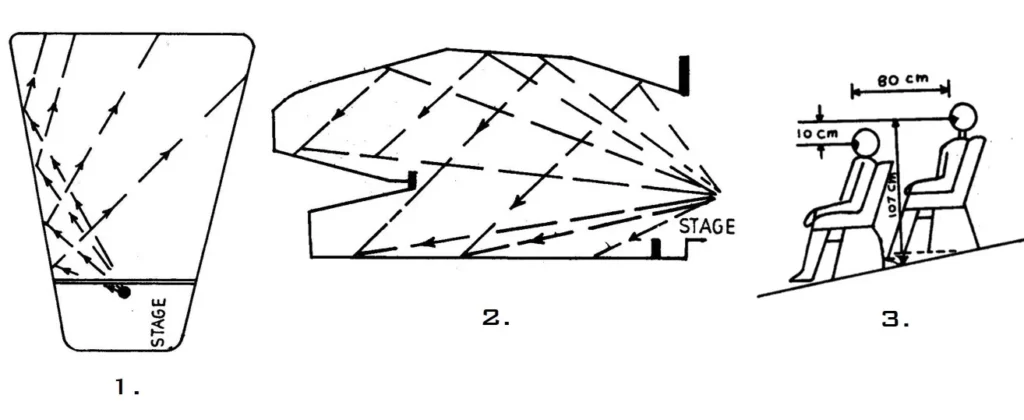
- Diagram showing typical raking arrangement of seats for better vision……..The furnishings and the audience contribute to a great extent to the absorption of sound. To ensure optimum absorption from the audience, the seats in the hall are raked.
3) Acoustical treatment at 89-Cinema

- Photograph showing raking arrangement of seats in the 3rd auditorium of 89-cinema
- Raking arrangement is done in order to ensure optimum sound absorption from the audience resulting in better sound quality.

- Photograph showing the designer wall clading of the 4th auditorium
- Grooves have been provided in the wall clading to act as a designer element as well as to absorb sound waves
- The surrounding speakers are placed at an interval of 3 metres all along the red wall clading to produce special sound effects -like the fading effect of sound which the main speakers and woofers are unable to produce.
4) Sound source in the auditoriums
- Source of sound lies on the centre line of the auditorium.
- The main speakers and the sub woofers are placed behind the screen.
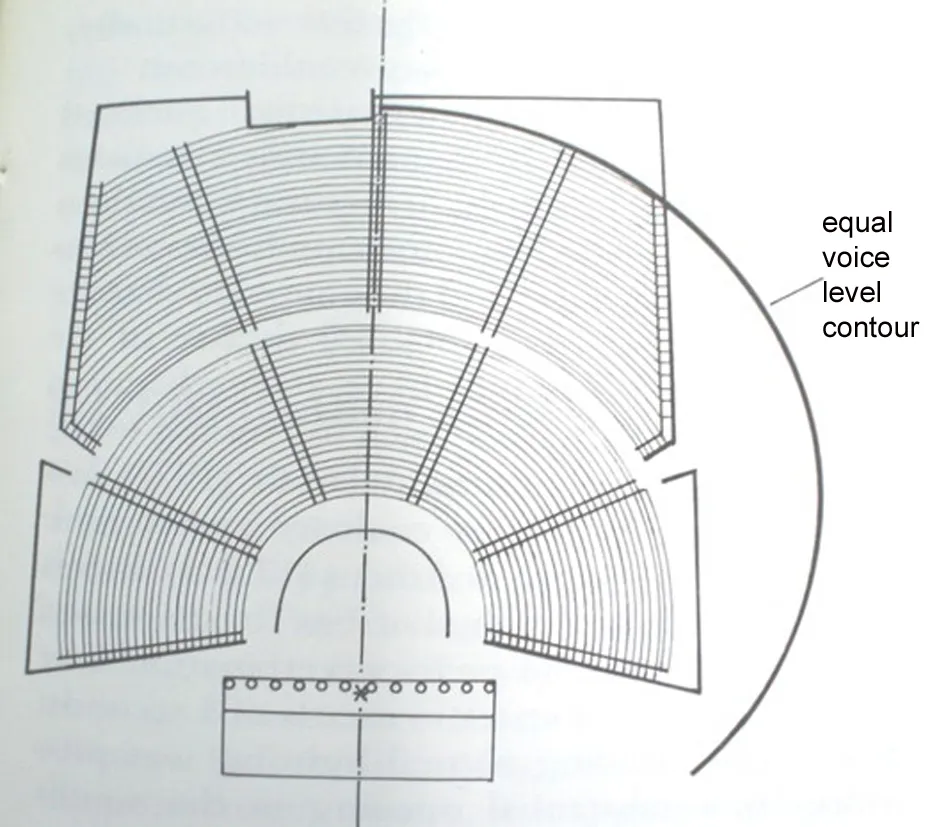
- The surrounding speakers in the auditorium are provided to give better sound effects.
- The screen which appears to be smooth and white is actually perforated to facilitate the transmission of sound waves from the speakers kept behind the screen.
5) Speaker placements
Placement of main speakers and sub woofers is generally done in two systems….
- Bi amplified system & 2. Tri amplified system
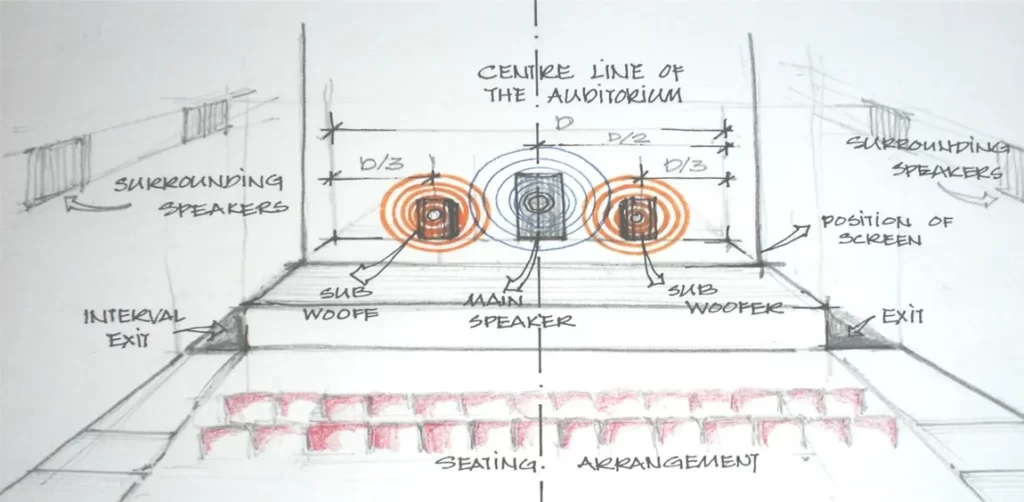
- Bi amplified system- one sub-woofer is placed on the centre line of the auditorium, behind the screen
- Tri amplified system- two sub woofers are placed on centre line of the auditorium, behind the screen.
6) Transmission of sound in the auditorium
- The sound emitted by the speakers reaches the audience:
- Directly
- After relection from ceiling,floor and walls.
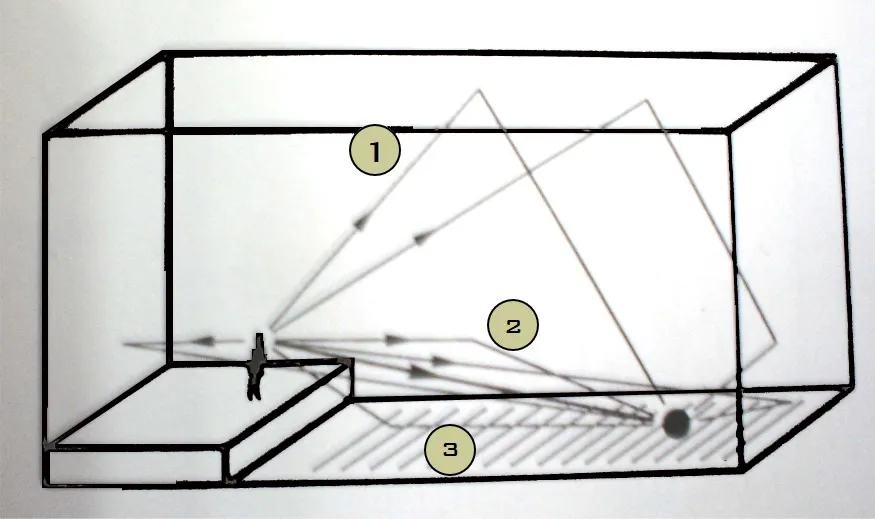
- Diag. Showing reflection of sound waves from
- Ceiling
- Walls
- Floor
- Some part of the sound waves gets absorbed by ceiling, floor and walls depending upon their material.
- Human body itself is a very good sound absorber.
7) Time lag in reception of sound
- Time lag – in an auditorium the audience sitting in the front receives the sound waves few milliseconds before those sitting at the back due to the reflection of the sound waves.
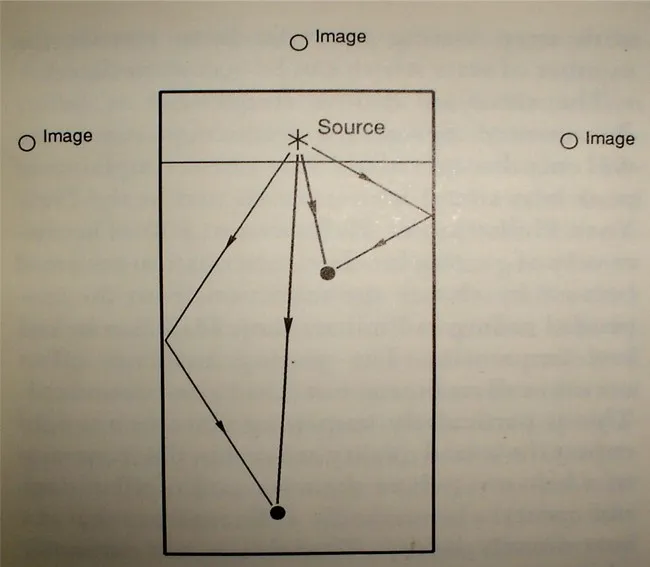
Diag. Showing variation in reception of sound acc. To the variation in a person’s position.
- Defect of echoes – the defect of echoes may also happen due to the reflection of sound waves.
- Correction – to do away with the defect and match the receiving time, wall, floor and ceiling are treated with absorbent $ reflective surfaces accordingly.
8) Acoustic treatment in ceilings
- Starting from the screen to the first row of seating, the ceiling is designed to absorb the sound waves without reflecting them. Alpha tiles (highly dense and absorbent) are used here $ glass wool is placed on top of it for sound insulation again.
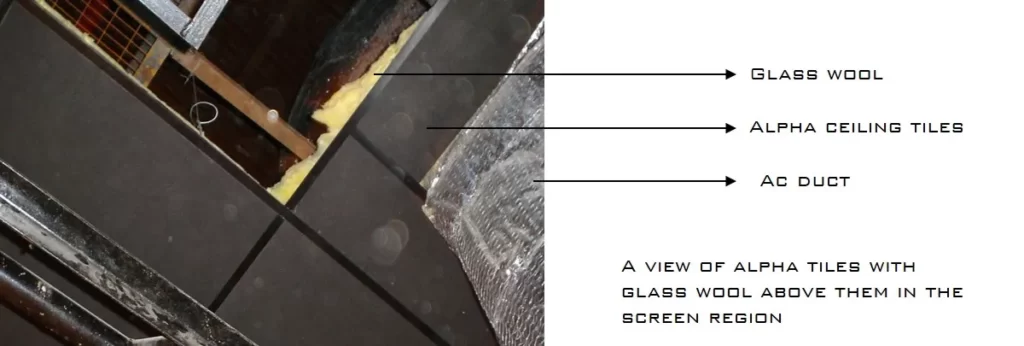
- From the first row to somewhere in the middle of the seating, beta tiles (acoustic ties) are used.
- From the middle to the end of the auditorium, alpha gamma tiles are used with glass wool on top of it.
9) Acoustic treatment of the walls
- The wall behind the screen is insulated with thick sheets of glass wool covered with fabric on the exterior.
- From the screen to the first row of seats acoustic board & fabric is used for the wall to absorb sound waves

- From the 1st row to the middle of the seating, a reflecting surface is used
- At the back, the wall is again made sound absorbing by use of fabric
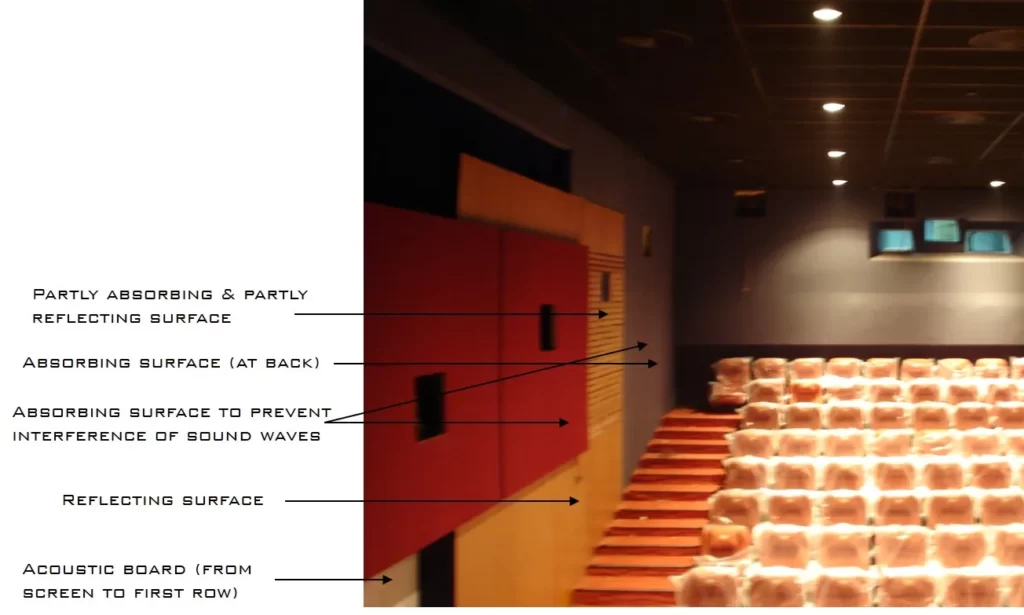
A view showing acoustic treatment of the walls of the auditorium
10) Materials for acoustic treatment
- Acoustic tiles : they are used in the false ceiling of the auditorium. Their acoustic properties differ according to their densities.
- Acoustic board : used on the walls. It is made up of compressed glass wool and wooden fibre, hence acts as a very good sound absorber.
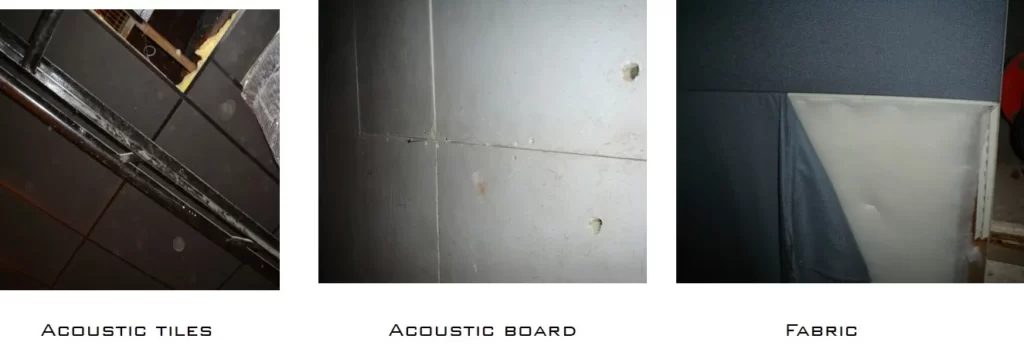
- Fabric: it is used on the wall to facilitate the sound absorption.
- Foam sheets and carpet: they are used on the floor of the auditorium to avoid sound reflection by the floor.
- Veneer finish: a matt finish is given to the wooden wall cladding to control the sound reflection. Primarily used for aesthetic purpose.

- Glass wool : this is used in ceilings and walls for thermal and sound insulation .It is a good absorber of sound.
11) Methods of sound insulation for floors

- Different methods of sound insulation for floors used in auditoriums

- Different methods of sound insulation for timber floors used in auditoriums
12) Qualitative analysis of lighting
- Lighting in multiplexes and Cinema halls

Qualitative analysis
- Lighting has to fulfill, both the function and the purpose of ambience.
- Lighting used in ceilings, curtains, walls etc. For ambience.
- Lighting at the exits
- Guiding neon lights at steps etc have functional importance.
- Quality (esp. Intensity) of light is a very important consideration.
13) Day lighting in the multiplexes
Day lighting aspects: the central atrium of the Nataraj complex provides ample day light to the singly loaded corridors during the day. The quality of the day light can be seen in the photographs below.

- The atrium is covered by fibre sheets supported on a truss framework which also acts as a design element as seen above.
- The framework also has artificial lights at regular intervals to light the space.
14) Lighting – ticket counter
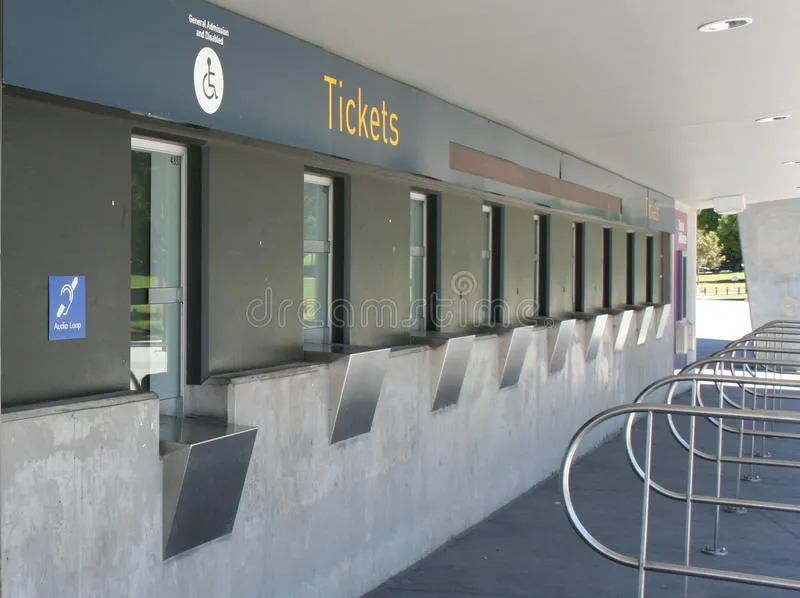
- As seen on the top of every counter the shows and their ticket status are displayed on LCD screens with contrasting colours for the ease of customers
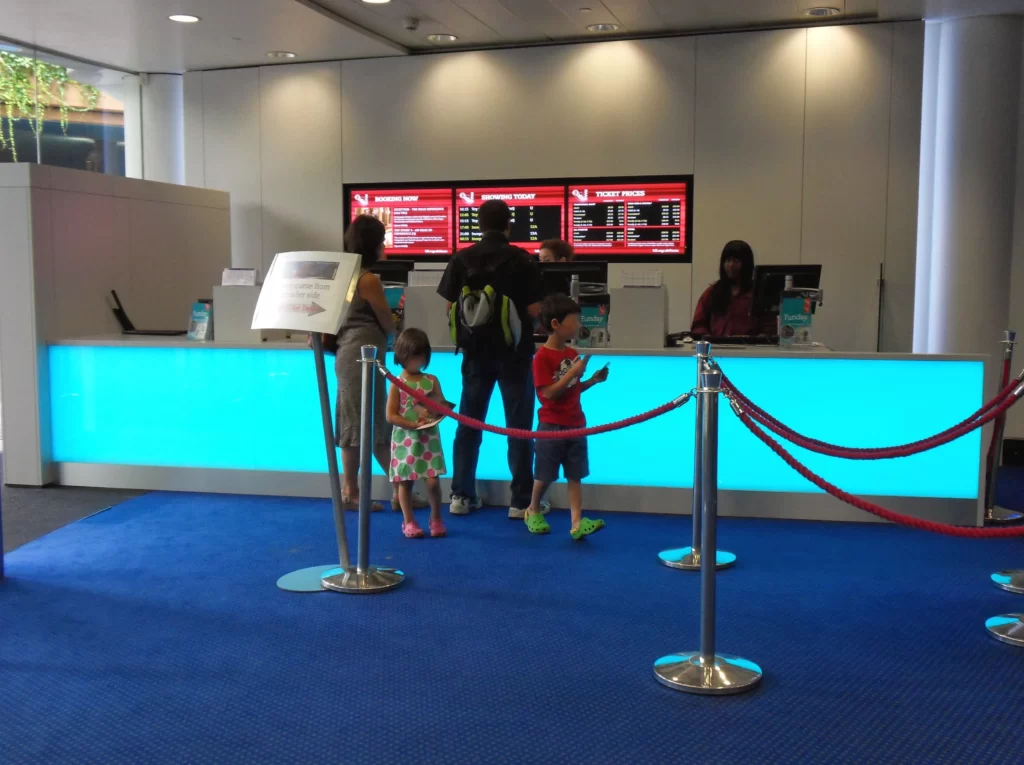
- The ticket counter during daytime….With the translucent fibre shed
The ticket counter
- One of the most highlighted elements of the facade…..Use of fluorescent green backdrop with their motto “just chillax” in bright red and spot lights…..Marks out from a distance.
- The shed covering the counter is translucent providing ample daylight as seen in the photograph
15) Lighting-lobby
- The floor has been raised and the ceiling has been recessed in organic patterns (circular and elliptical) to define the stage within the lobby
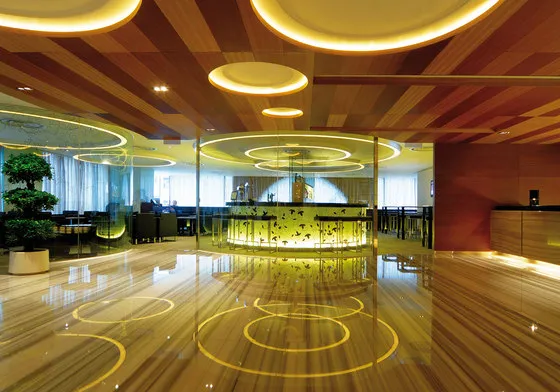
- A live performance of a music band happening in the common waiting lobby of the cineplex Spotlights have been used to highlight individual performer
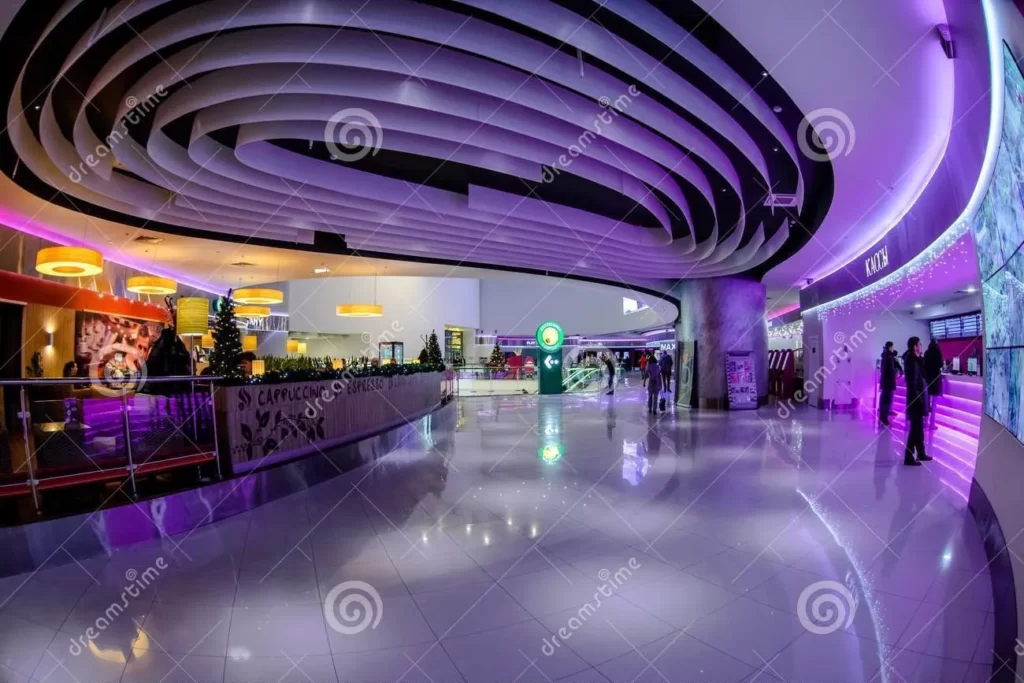
- Lighting the lobby: fluorescent lights in tubular form has been placed along the periphery of the recessed ceiling area. The other lights parallel to the 1st row and gradually decreasing length has been laid out in organic pattern
16) Facade lighting
- The series of designer lamp-posts along the footpath have 2 way lighting systems
- The frontier light lits up the region below and the posterier one throws light on to the glass facade of the 89-cinema multiplex.
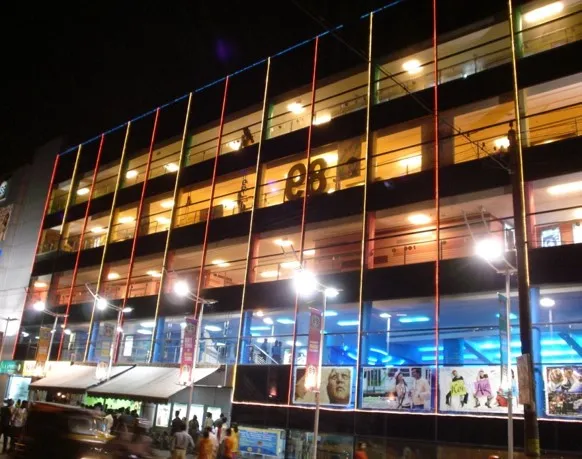
- The front facade is primarily of glass – one can see the interior lighting of the lobbies from outside …..The concept here is to bring the inside out
Lighting device :
The photograph shows the facade lighting device – the designer lamp-posts

17) Interior lighting
- The food counter – cafeteria at 89-cinema…….Use of spot lights above each counter

- Peripheral lighting in the lobbies…..Source of light lying beneath the false ceiling throw light on to the walls
- The result of such lighting systems is better light quality producing diffused light…..Spreads uniformly and has less strain on eyes
18) Lighting – movie posters
- Movie posters : neon lights are used behind the cinema hoardings and movie posters (printed on fabric) to highlight and attract the attention of the viewer…………
- The posters are present both on the facade as well as the lobbies of the multiplexes. The lighting is done from behind.

18) Projector room
- The control unit of the auditorium from where the movies are projected and the acoustical and lighting effects inside the auditorium are controlled

- Photograph showing light projected from the projector room
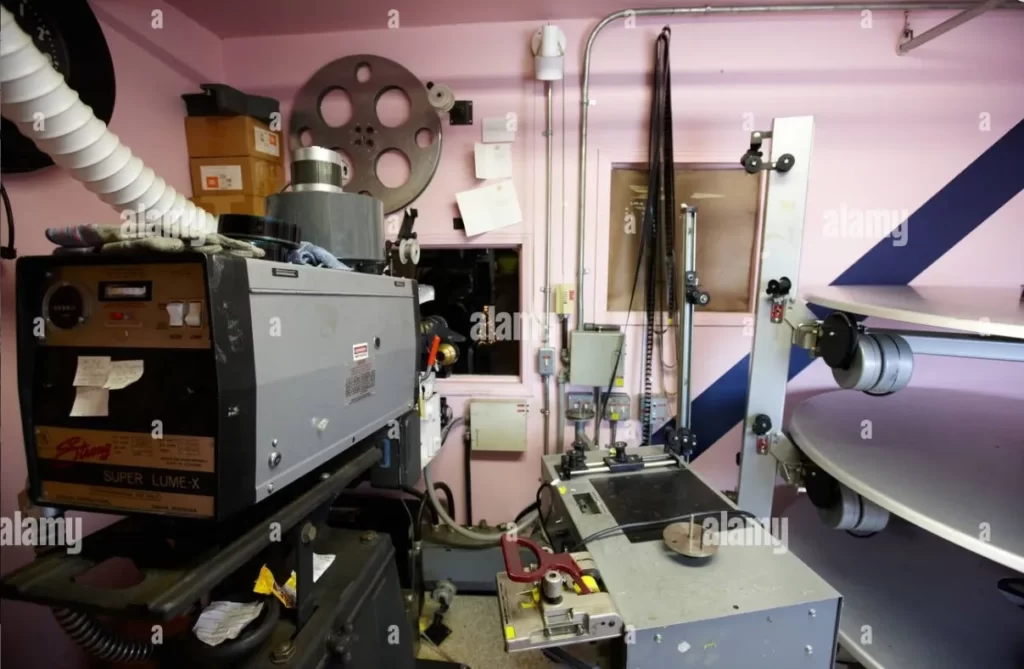
- The interiors of the common projector room for the 3rd and the 4th auditorium at 89- cinema showing the machinery and equipments used
- The rear wall of each auditorium is provided with 3 rectangular openings into the projector room. The movie projection happens through these openings.
- Projector room : projector room of all the auditoriums in the nataraj complex are inter connected.
- It is the control unit of the auditoriums from where movie projectors, lighting, air conditioning and sound system is controlled.
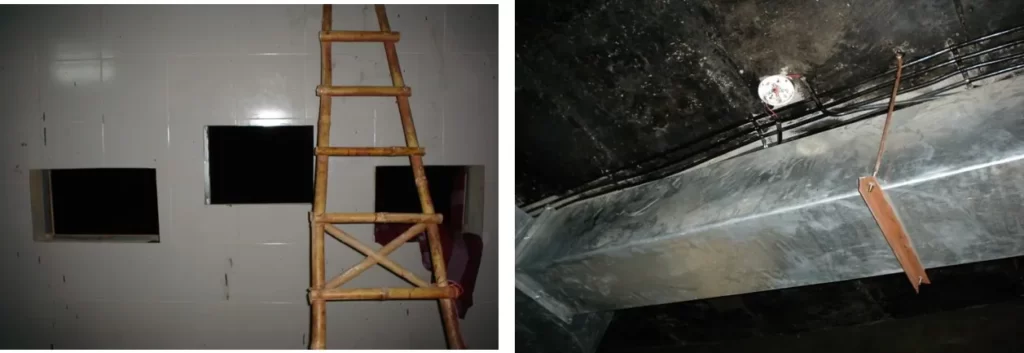
In conclusion, the acoustics in multiplexes play a critical role in the movie-viewing experience. By investing in proper acoustic design and consulting with experts in the field, multiplex chains can ensure that their customers have a high-quality, immersive movie experience.